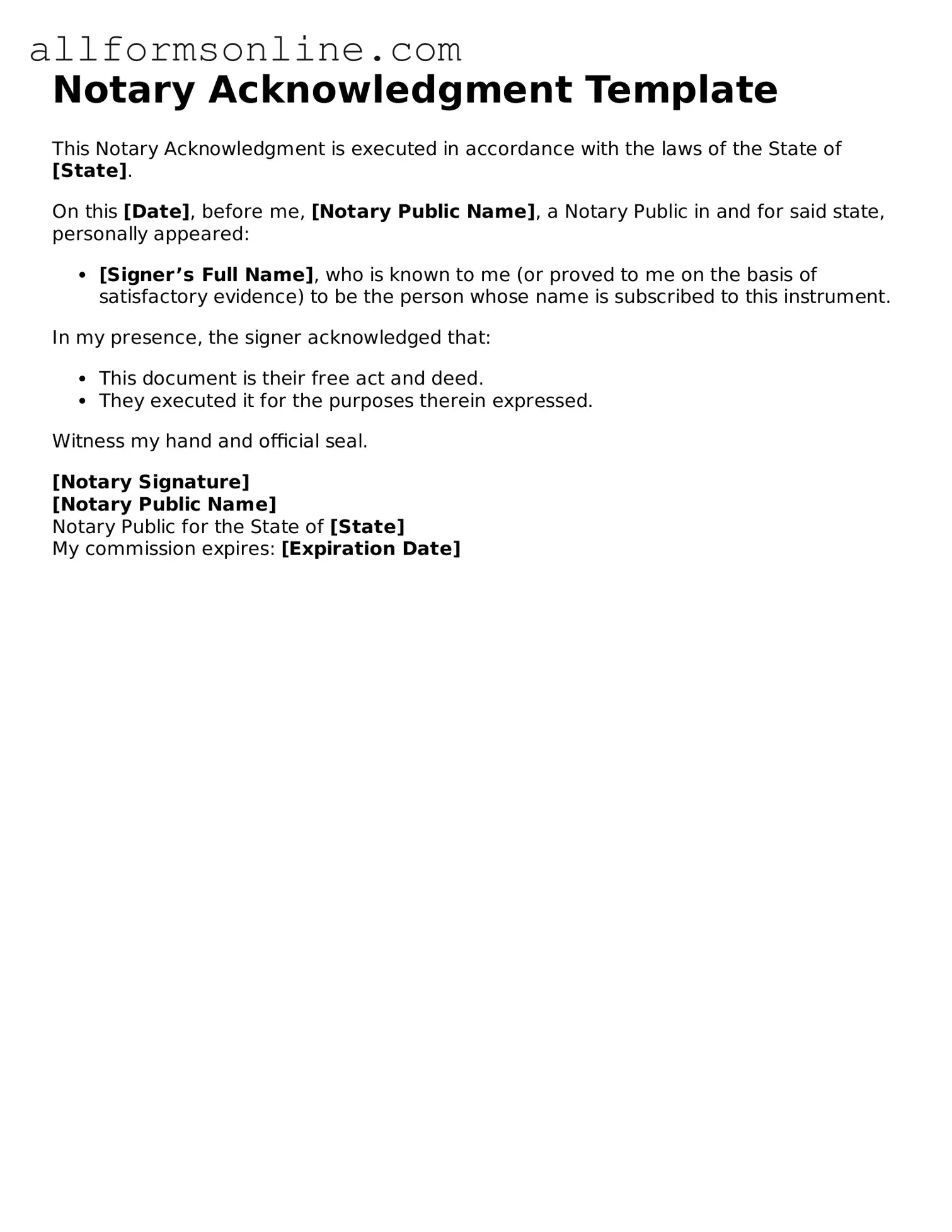What is a Notary Acknowledgement form?
A Notary Acknowledgement form is a document that verifies the identity of a signer and confirms that they willingly signed a document. It serves as proof that the signer appeared before a notary public and acknowledged their signature on the document in question.
When is a Notary Acknowledgement form needed?
This form is typically required when signing legal documents, such as deeds, contracts, and powers of attorney. Many institutions, including banks and courts, may require notarization to ensure the authenticity of the signatures involved.
Who can perform a Notary Acknowledgement?
A notary public, who is a state-appointed official, is authorized to perform acknowledgments. Notaries are trained to verify the identity of signers and ensure that they understand the documents they are signing.
What information is included in a Notary Acknowledgement form?
The form generally includes the name of the signer, the date of the acknowledgment, a description of the document being signed, and the notary's signature and seal. This information helps establish the legitimacy of the notarization process.
Is a Notary Acknowledgement form the same as a Notarized Signature?
While related, they are not the same. A notarized signature indicates that a notary public has witnessed the signing of a document. A Notary Acknowledgement form specifically confirms that the signer has acknowledged their signature before the notary.
Can a Notary Acknowledgement be done remotely?
In some states, remote notarization is allowed, which enables notaries to perform acknowledgments via video conferencing. However, the rules regarding remote notarization vary by state, so it is important to check local regulations.
What happens if a Notary Acknowledgement form is not completed correctly?
If the form is not completed correctly, it may lead to the rejection of the document that requires notarization. This can cause delays and may necessitate the signer to reappear before a notary to complete the acknowledgment properly.
How long is a Notary Acknowledgement valid?
A Notary Acknowledgement does not have a specific expiration date. However, the validity of the underlying document may affect how long the acknowledgment is considered valid. It is advisable to check the requirements for the specific document in question.
